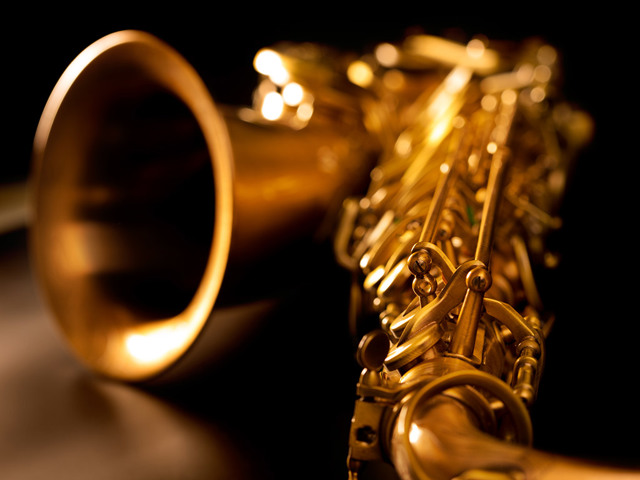Buying a new saxophone? Adams gives advice!
And whether you are just starting to play, have been playing in an orchestra for a few years, or are a professional musician, your saxophone should meet your needs. But how do you find a new instrument? We help you choose the saxophone that suits your situation. First of all, it's important to know which type of saxophone you want to play. Do you want a soprano or alto? Or do you go for the bigger guns like a tenor or baritone saxophone?
Read more about the different types of saxophones here.
We also always recommend, especially if you are buying a saxophone for the first time, not to buy the first saxophone you come across online, but to get advice on which saxophone suits you best. Adams Music Centre ensures that the instrument is well-adjusted and in good technical condition. Furthermore, when purchasing a new instrument, we offer a service check after a few months to inspect your instrument and adjust it if necessary. All instruments that leave our shop have been checked once. If something needs to be adjusted or replaced, we often do this at no extra cost before the purchase. You buy the service of a specialty store, and we want to make sure you are happy with what you get. This is just something extra to consider before making a purchase.
It is also interesting to look at used saxophones. What should you pay attention to when buying a second-hand saxophone? Read it via the link below.

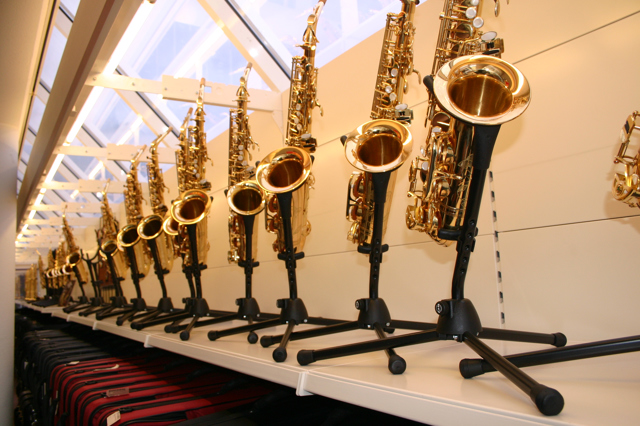
The pros and cons
A new saxophone gives a special feeling. You know that this saxophone is ready to play and has no wear and tear. The lacquer or silver plating is perfect, and the pads are new. You know that it has the latest mechanism and that modern production techniques have been used. A new saxophone also comes with a warranty, either from the factory and/or the saxophone shop where you buy it. There is also a psychological effect because you know this is a NEW saxophone. For beginner players, this can be a great advantage.
Of course, there are also disadvantages to buying a new saxophone. A new saxophone can be very expensive. New saxophones can cost several times more than their used counterparts. Another problem can be the variation in quality from saxophone to saxophone. Not only the difference between brands but also between types of the same brand. With mass production, the artisanal nature of producing a musical instrument is often lost. This is a good reason to buy saxophones from a professional saxophone shop, such as Adams. They will spot and fix many of these issues in advance, if necessary.
What is your playing level?
Whether you are a beginner or a professional, at Adams we have a wide range of different brands and types of saxophones for every target group.
Children's saxophones
Learning the first notes on an instrument that is sensitive to damage and where little fingers just can't quite reach the keys can be asking for trouble. Fortunately, there are special plastic saxophones and saxophones that can be played with small fingers. Plastic saxophones also have hardly any maintenance costs and can withstand rough handling. These are also suitable for a smaller budget if your child is not yet sure if they want to continue playing the saxophone.
- Suitable for children's fingers/small hands
- Made of plastic
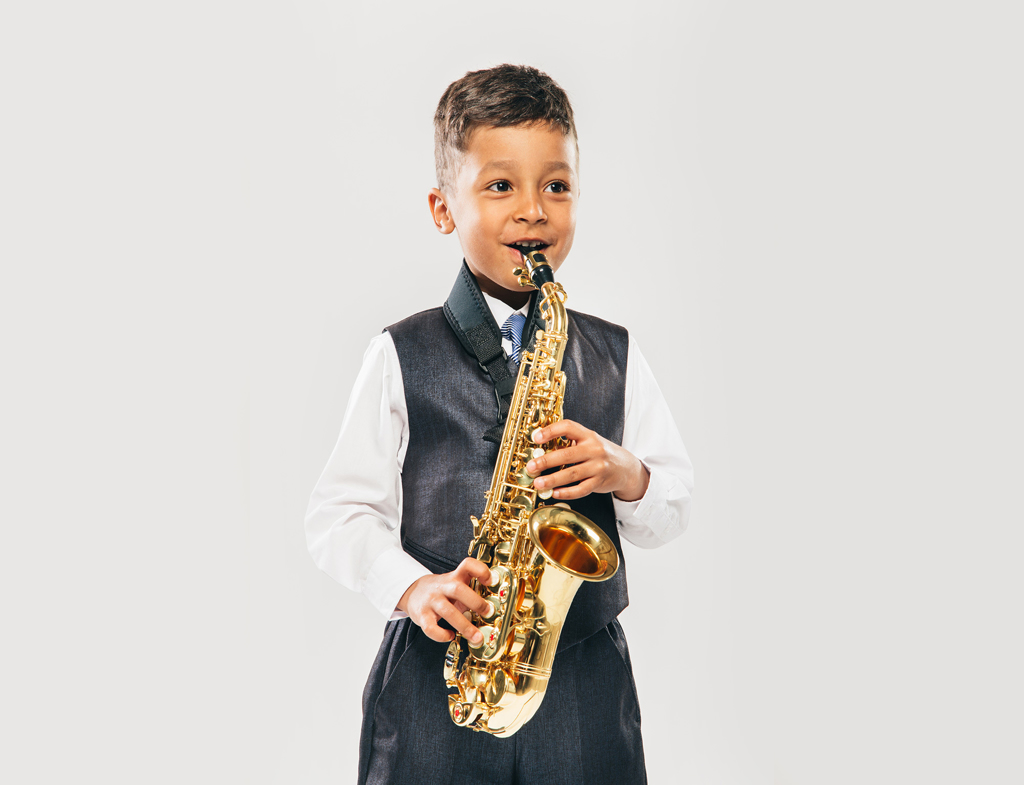
Beginner
Are you about to embark on a new challenge and looking for a saxophone that fits? Then you are looking for an instrument that will give you a good start. And if your new hobby ultimately doesn't fit, it shouldn't have cost too much money either. We therefore recommend alto and tenor saxophones. These are versatile instruments with a good beginner segment. The saxophones in this category are also suitable for taking along to a street band or "joekskapel." Be sure to also check out our second-hand offerings. Furthermore, the maintenance costs for every saxophone are about the same, whether it's a professional or a beginner model.
- Made of brass/a combination with gold brass
- Built in China, Indonesia, or Taiwan
Advanced
You have been playing the saxophone for a few years and may have already obtained your A and B hafa diplomas. Then it's probably time to trade in your beginner saxophone for a better one. Or to trade in the instrument from the association for your own saxophone. Most major saxophone brands have a model next to their flagship that will be suitable. We also recommend looking at professional second-hand models.
- Brass or gold brass
- Country of manufacture is often European, the USA, or Japan
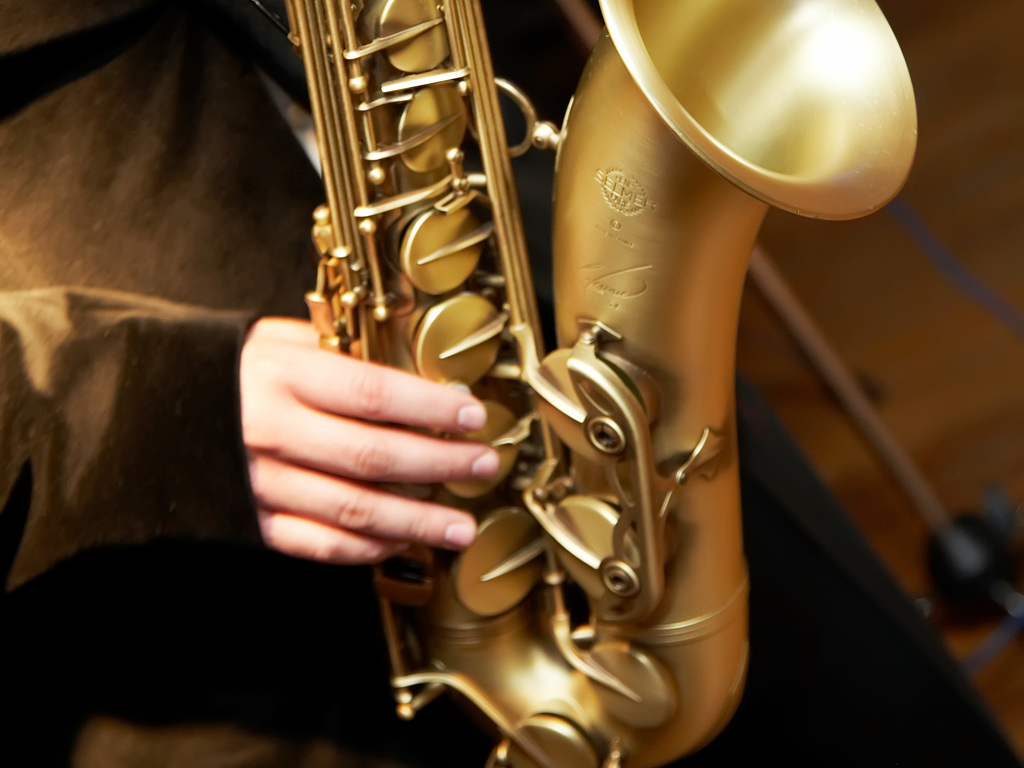
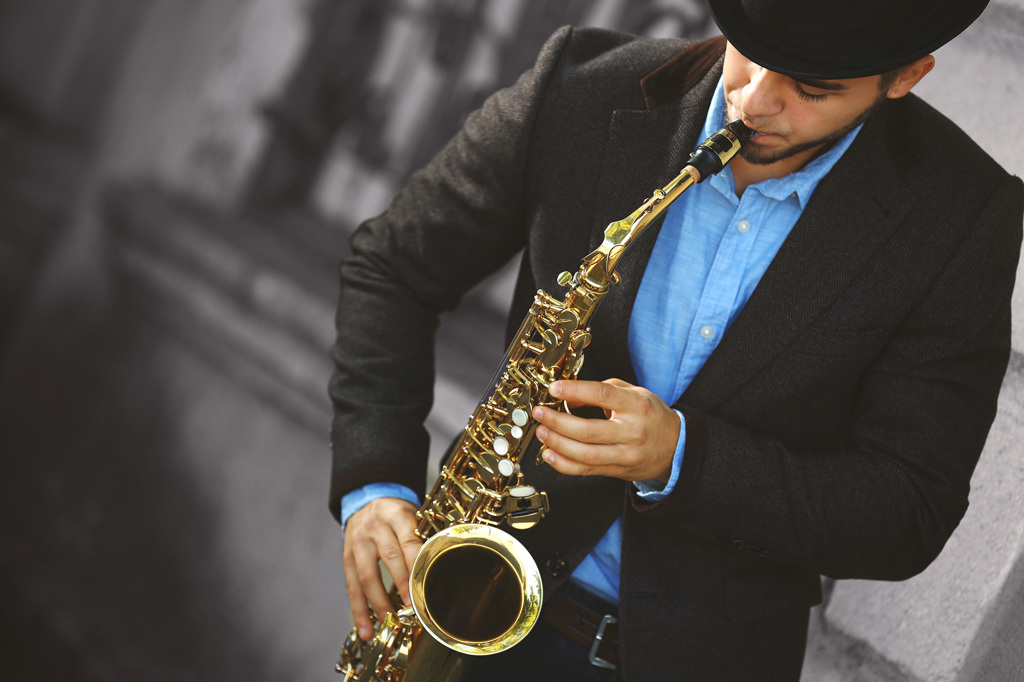
Professional
As a professional saxophonist, you probably already have an idea of what instrument you are looking for. However, we still recommend that you talk to our specialists. Discuss with them the maintenance costs of an instrument, for which genre the instrument is suitable, and ask about alternatives to that particular model. To help you get oriented, you can view our saxophones for professionals here.
How to test a saxophone?
Saxophones are not all the same; each type, brand, and even individual saxophones often have a unique intonation and timbre. The best way to purchase a saxophone is to bring someone who knows how to play the instrument and let them try it out. If you are a saxophonist yourself, it is easy to get lost in the moment and not be critical enough.
For musicians, when you are going to try a saxophone, always pack the following essential items:
- Your own mouthpiece, or the mouthpiece of the person who is going to test the instrument.
- Cork grease
- Tuner
- Reeds of various strengths
For beginner saxophonists, you should try to inspect the saxophone as thoroughly as possible. If it is a used saxophone, spend some time examining the body for damage and research in advance what the common problems are for that type of saxophone. If you have a friend or acquaintance who plays the saxophone, let them test every note and play loudly and softly. Also, try playing a chromatic scale slowly, from the lowest to the highest notes, so you can check for leaking pads and poorly sealing keys. An advanced "trick" is to play the overtones of Bb, B, C, and D and compare them to their fingered counterparts. There will be tonal differences, but on a good saxophone, there should be no change in pitch.
